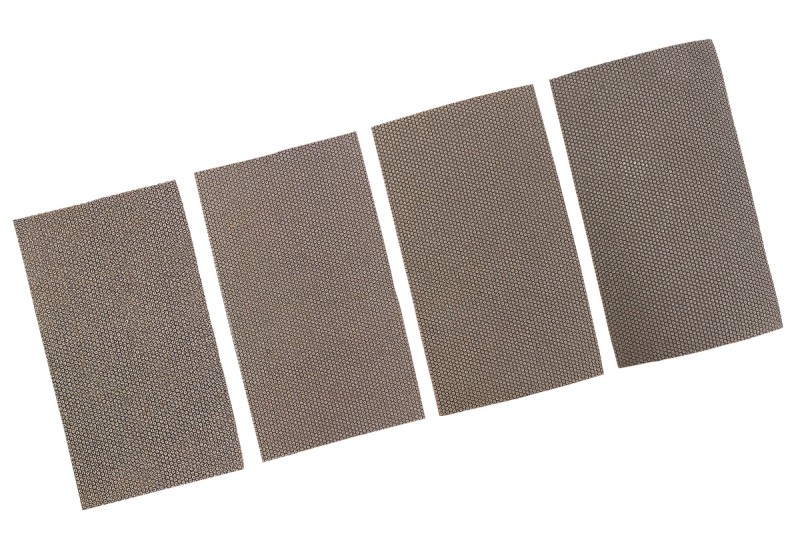Glass products are everywhere in our daily lives, from glasses and mirrors to decorations and windows. However, due to improper handling or accidental collisions, the edges of glass products can become sharp, posing a risk of injury. Polishing these sharp edges is essential for safety and aesthetics. This article will explore various methods for effectively polishing sharp glass edges.
How to Polish Glass Edges?
1. Sandpaper polishing method
If you don’t have a professional glass edge grinder, sandpaper grinding is a practical alternative. Here’s how to do it:
Materials Needed: Fine sandpaper (400 to 600 grit is best).
Program:
1. Place the sandpaper on a flat, stable surface.
2. Place the sharp edge of the glass on the sandpaper.
3. Grind the edge horizontally in one direction, applying light pressure.
4. Avoid wiping back and forth as this will create an uneven surface and increase sharpness.
5. Check the edges regularly to make sure they are getting smoother.
This method works very well for minor sharp edges and can be easily done at home.
2. Glass abrasive grinding method
For a more refined result, you can use a glass abrasive specifically designed for polishing glass surfaces. Here’s how to use this method:
Materials Needed: Glass abrasive paste (similar to thick toothpaste), soft cloth or hands, paper towels.
Program:
1. Apply a small amount of glass abrasive to the sharp edge of the glass.
2. Use your fingers or a soft cloth to spread the abrasive evenly along the edge.
3. Gently press the abrasive into the edge, making sure it covers the entire sharp area.
4. Wipe away excess abrasive with a clean paper towel.
5. Allow glass to dry completely before handling.
This method is particularly useful for obtaining smooth surfaces and can be used for slightly and medium-sharp edges.
3. Glass edge grinding machine grinding method
The most effective and professional way to grind sharp glass edges is to use a glass edge grinder. This method is commonly used in glass manufacturing and repair shops. Here’s how it works:
Materials Required: Professional glass edge grinder.
Program:
1. Set up the glass edge grinder according to the manufacturer’s instructions.
2. Carefully place the glass piece into the grinder, making sure the sharp edge is aligned with the grinding wheel.
3. Turn on the grinder and gently guide the glass along the grinding wheel to evenly grind the edges.
4. Check the edges frequently to ensure they are smooth and even.
5. When finished, clean the glass to remove any dust or debris.
This method produces the best results, creating a flat, smooth edge without any sharp corners. It is ideal for larger pieces of glass or when multiple edges need to be polished.
Safety Precautions for Polishing Sharp Glass Edges
1. Wear protective gear
Goggles and gloves: Always wear goggles and gloves when handling and polishing glass. Goggles protect your eyes from flying glass shards, while gloves prevent cuts and scratches. Choose cut-resistant gloves for added protection.
2. Handle glass with care
Stability during grinding: When sanding the edge of glass, make sure your hands are steady and firm. Avoid excessive force or sudden movements, as these may cause uneven sanding or breakage. Steady hands help maintain control and prevent accidents.
Avoid over-grinding: Be careful not to over-sand the edges of the glass. Over-sanding can result in an uneven surface and increase the risk of chipping or breaking the glass. Focus on sanding in one direction and check your progress frequently to avoid excessive wear.
3. Use the right tools
Choose the right grinding method: Choose the appropriate grinding method based on the tools available and the condition of the glass. Whether using sandpaper, glass abrasives, or a specialized glass edge grinder, make sure the tool is appropriate for the task at hand.
Check the tool before use: Before starting the polishing process, check your tools for signs of wear or damage. Using damaged tools will result in poor grinding results and increase the risk of accidents.
4. Repeat as necessary
Evaluation of grinding effect: If the initial sanding does not achieve the desired smoothness, do not hesitate to repeat the process. Take your time and make incremental adjustments to ensure that the glass edge is effectively polished without compromising safety.
Conclusion
As glass products continue to improve in quality, they play an increasingly important role in our daily lives. However, handling sharp glass edges requires care and safety. By following these safety precautions (wearing protective gear, handling glass with care, using the proper tools, and evaluating abrasive effects), you can ensure a safe and effective polishing process.
Always put safety first to avoid accidental injuries and take the time to choose the correct sanding method and tools. As long as you are careful and cautious, you can achieve a smooth glass edge while minimizing the risks associated with glass handling.
Post time: Jan-17-2025

